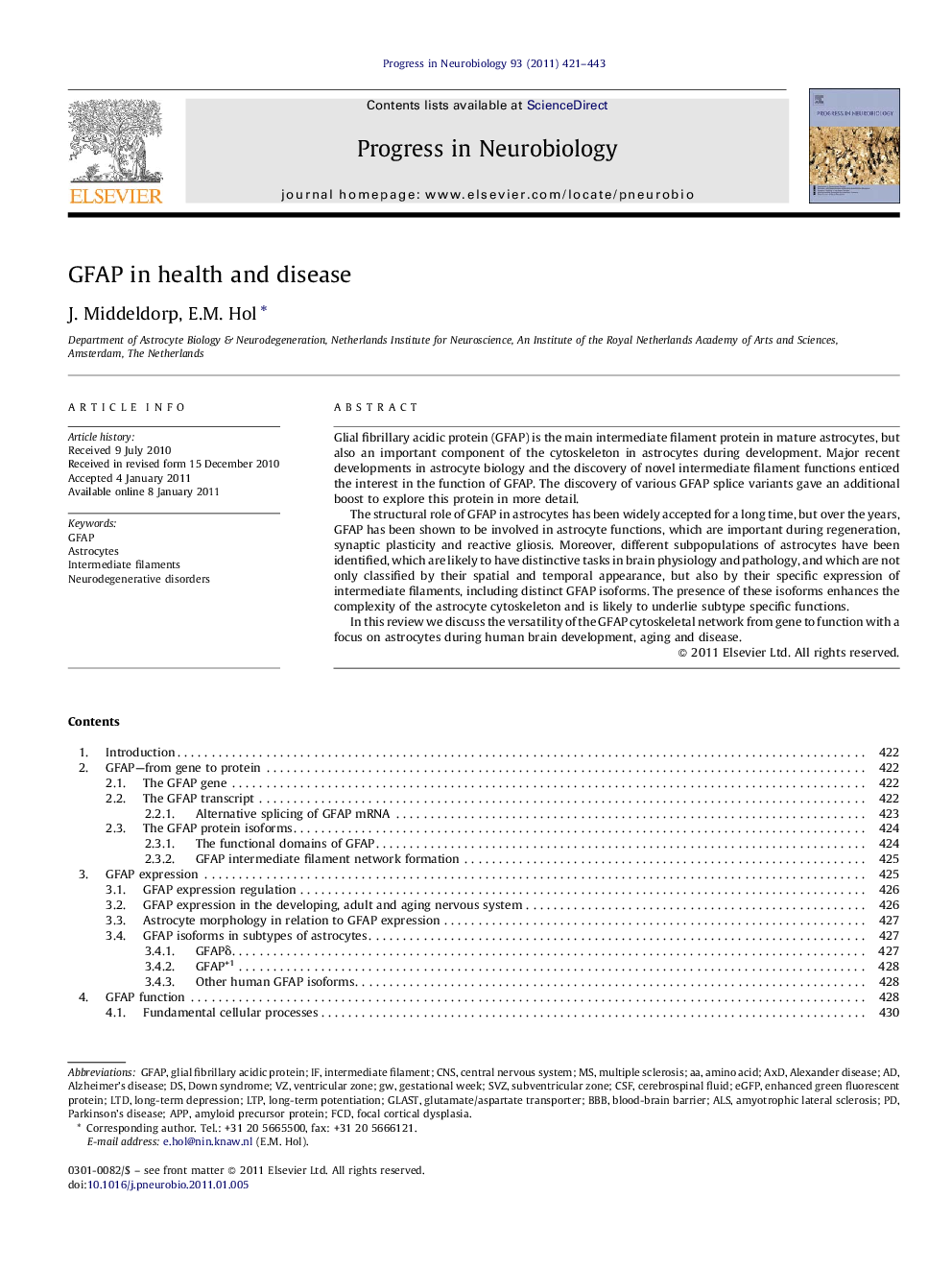| Article ID | Journal | Published Year | Pages | File Type |
|---|---|---|---|---|
| 4353688 | Progress in Neurobiology | 2011 | 23 Pages |
Glial fibrillary acidic protein (GFAP) is the main intermediate filament protein in mature astrocytes, but also an important component of the cytoskeleton in astrocytes during development. Major recent developments in astrocyte biology and the discovery of novel intermediate filament functions enticed the interest in the function of GFAP. The discovery of various GFAP splice variants gave an additional boost to explore this protein in more detail.The structural role of GFAP in astrocytes has been widely accepted for a long time, but over the years, GFAP has been shown to be involved in astrocyte functions, which are important during regeneration, synaptic plasticity and reactive gliosis. Moreover, different subpopulations of astrocytes have been identified, which are likely to have distinctive tasks in brain physiology and pathology, and which are not only classified by their spatial and temporal appearance, but also by their specific expression of intermediate filaments, including distinct GFAP isoforms. The presence of these isoforms enhances the complexity of the astrocyte cytoskeleton and is likely to underlie subtype specific functions.In this review we discuss the versatility of the GFAP cytoskeletal network from gene to function with a focus on astrocytes during human brain development, aging and disease.
Research highlights► The astrocytic cytoskeleton protein GFAP plays role in many processes in the brain. ► Several isoforms of GFAP were discovered. ► GFAP isoforms are specifically expressed in subpopulations of astrocytes. ► GFAP isoforms can change the properties of the intermediate filament network. ► GFAP expression changes in astrocytes during development, aging and disease.
